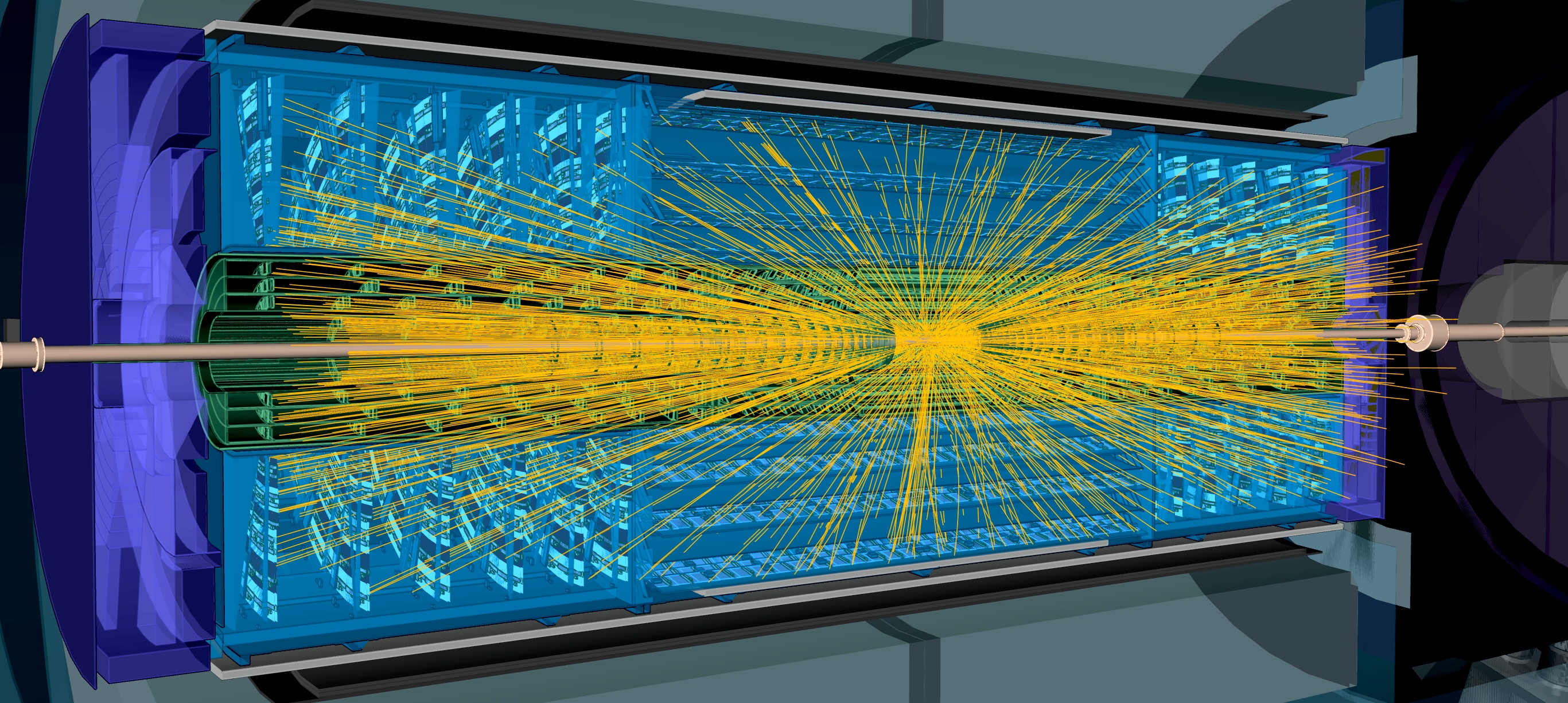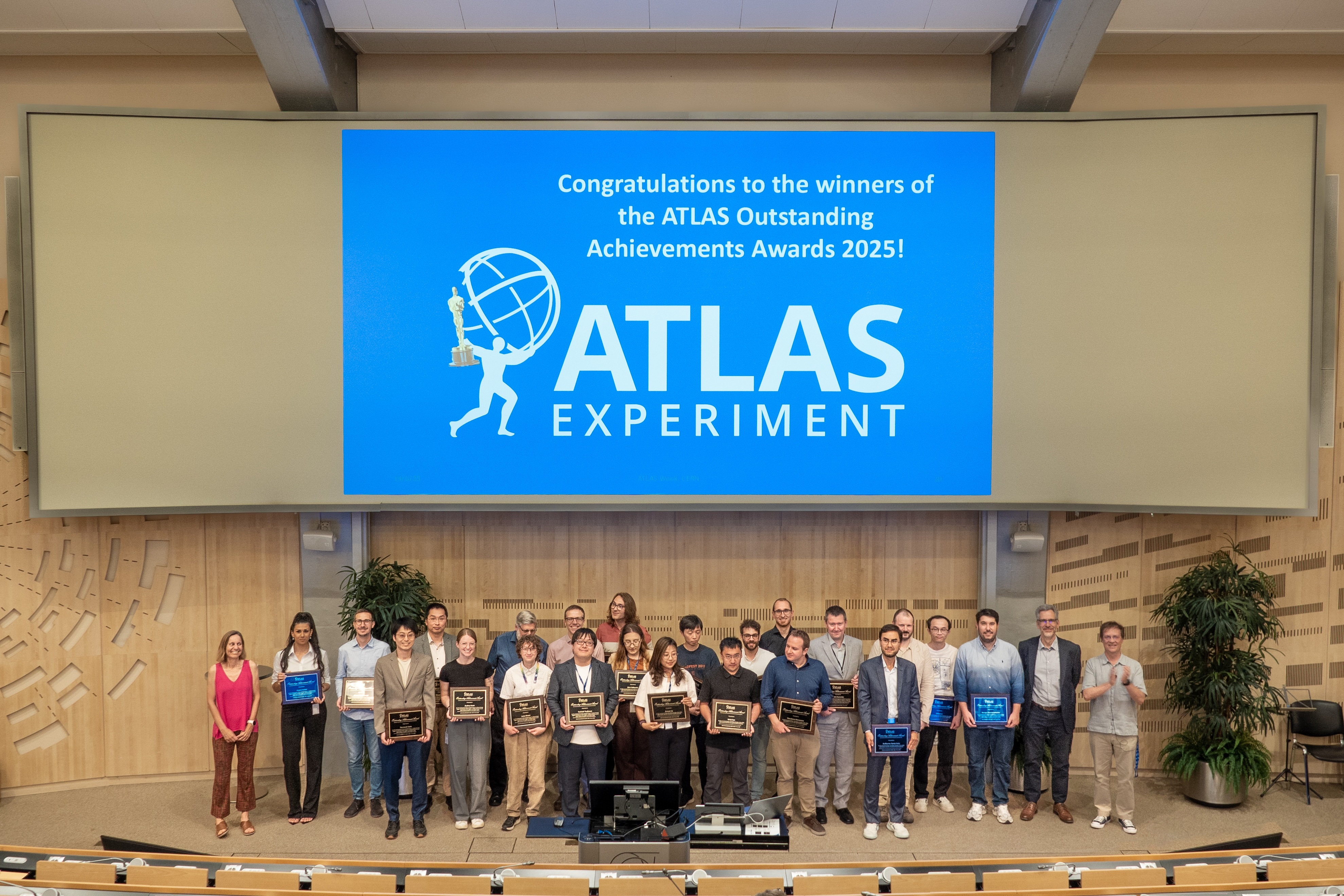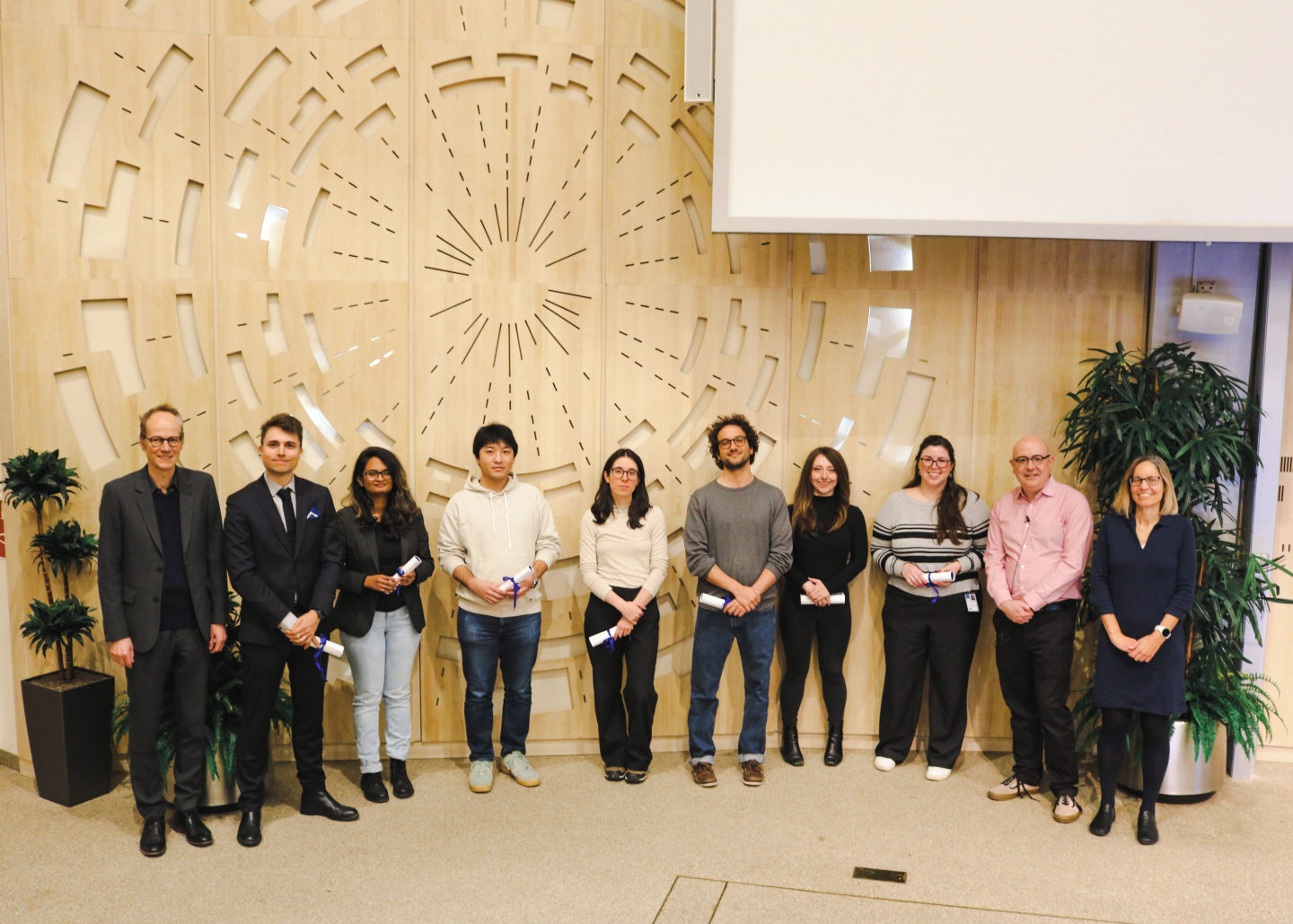ATLAS and CMS celebrate a decade of innovation by the RD53 Collaboration
1 July 2024 | By
Starting in 2029, the High-Luminosity LHC (HL-LHC) will provide much higher collision intensities to the ATLAS and CMS experiments, with up to 200 concurrent collisions (or pileup) per bunch crossing expected. This will create very complicated collision events with many overlapping tracks. Consequently, the ATLAS and CMS Collaborations are preparing to equip their tracking detectors with high-resolution inner tracking layers based on silicon pixel detectors. These new detectors will measure the inner points of the particle tracks as close as possible to the collision point.
The close proximity of the detectors to the interaction point — just 3 cm radial distance — means they will experience extreme data rates and radiation levels, and require a specialised design. The detectors’ front-end readout chips are a crucial component. They must be very fast, low-noise and radiation-hard, and specifically designed to avoid readout errors caused by charge build-up within the chips themselves — all while maintaining a low power budget. In addition, the new detectors have increased their number of pixels per area by about five times compared to the previous generation, moving from a pixel cell area of 50x250 μm2 for ATLAS or 100x150 μm2 for CMS, to 50x50 μm2.
The challenge of designing a chip capable of meeting these requirements motivated ATLAS and CMS experts to join forces. In 2013, they founded the RD53 Collaboration with some twenty institutes from both experiments. CERN served as the central hub for the RD53 Collaboration.
In 2013, ATLAS and CMS joined forces to found the RD53 Collaboration, which set out to design critical read-out chips for the experiments' upgrades.
Over the last ten years, RD53 has been characterising the effects of radiation on a novel electronics technology for high-energy physics detectors. Their work has made it possible to design detectors with circuits four times smaller than those of the previous generation. New building blocks were achieved and a large size demonstrator was submitted in 2017 using 65 nm technology. This development process led to the creation of prototypes and subsequently to the final versions of the ATLAS and CMS pixel read-out chips for the HL-LHC Inner Tracker detectors (respectively called ITkPix and CROC). The ITkPix chip is now being produced in its final version by industrial partner TSMC/IMEC, with excellent yield after wafer probing.
On 24 June 2024, during an awards ceremony in CERN’s Main Auditorium, the ATLAS and CMS Collaborations marked this important achievement with a special recognition of the RD53 Collaboration. The representatives of the RD53 Collaboration were presented with a plaque recognizing RD53’s “exceptional contribution to the HL-LHC upgrade with the design, submission and testing of the ATLAS ITkPix and the CMS CROC pixel readout chips for the Inner Tracker detectors”.





